First Aid For Fractures
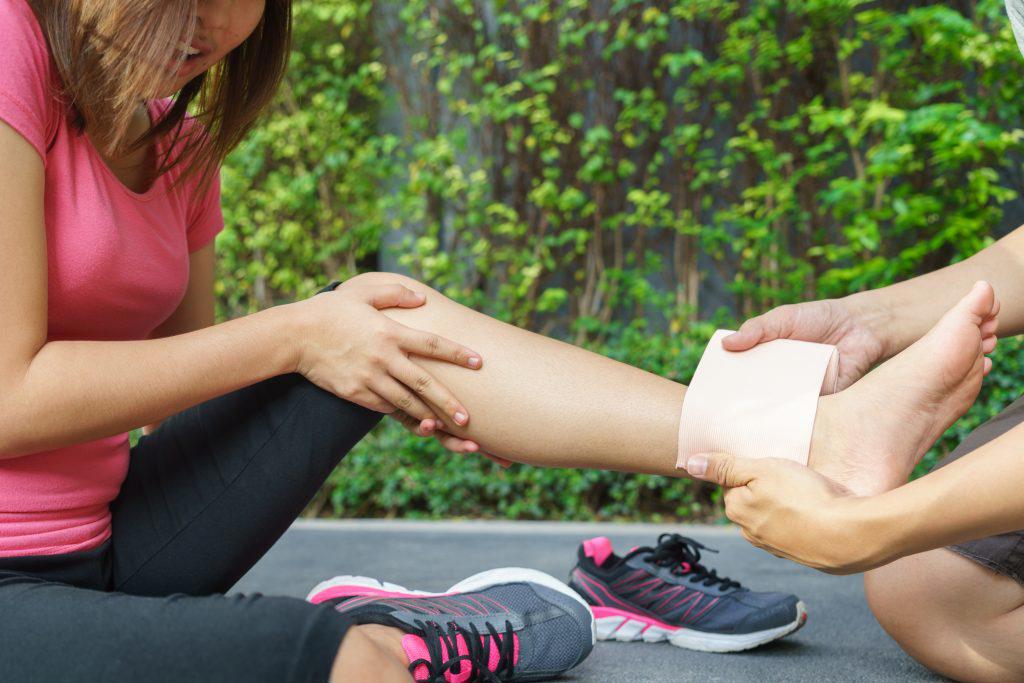
Do you play sport or live an active lifestyle? Does your job require you to perform labour-intensive and repetitive tasks? Do you work outside or in an accident-prone environment? If you answered yes, then you’re at risk of suffering from or witnessing a fracture.
Fractures, although painful, are often not life-threatening injuries. However, it is imperative they are managed correctly to ensure the healing process can run its course without any disruptions such as infection, permanent deformity or lifelong disability.
Anyone that is at high risk of suffering or witnessing a fracture should know the correct First Aid for Fractures procedure. Follow our tips on how to identify a fracture, provide First Aid for Fractures and seek medical assistance.
Types Of Fractures
A fracture is the result of a breakage in the bone. There are three types of fractures which are measured by the type and seriousness of the damage.
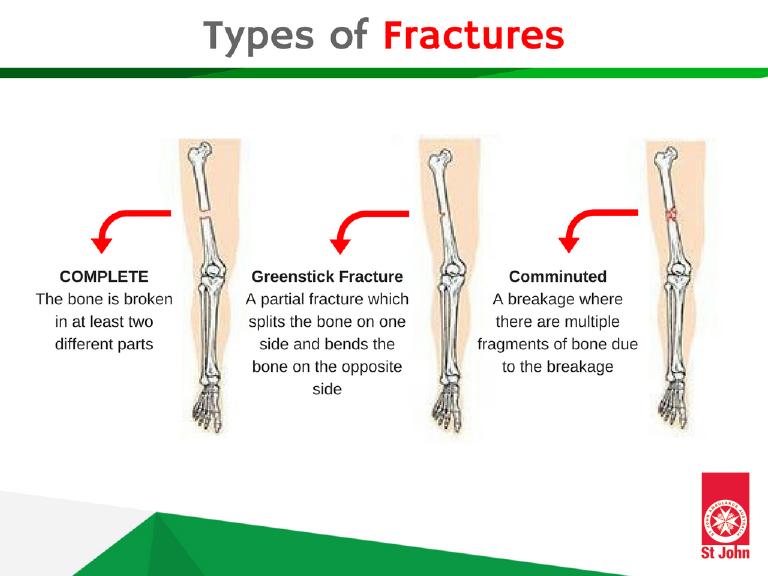
Fractures are categorized as closed, open or complicated:
Closed
A closed fracture means there was no breakage to the skin when the injury occurs. However, there may be bleeding surrounding the bone which can cause swelling.
Open
An open fracture is when the breakage causes the skin over the bone to tear. This may include the bone tearing and bulging through the skin.
Complicated
Complicated fractures are a result of a fracture causing further injury. This can include damage to major nerves, blood vessels or vital organs. An example of a complicated fracture is a broken rib piercing a chest organ.
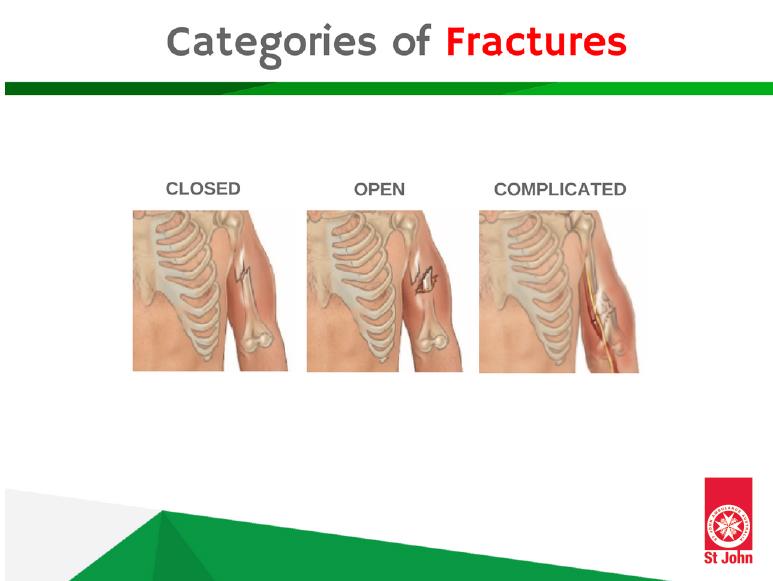
Causes Of Fractures
A fracture is caused when a strong impact against the bone causes a break or crack. The impact can either cause a direct or indirect fracture.
A direct fracture is when the bone suffers a break or crack in the location the impact occurred.
An example of a direct fracture is when an object has a violent impact with a body part. This could occur when playing sport and attempting to mark a football. If the finger was placed incorrectly, the power from the ball may cause a direct crack or breakage.
An indirect fracture is when the impact travels through the body and causes a break or crack in a different area.
An example of an indirect fracture is someone using their hand to break their fall and it results in a collarbone fracture. This is a consequence of the impact travelling up the arm and causing a break or crack to occur in the collarbone.
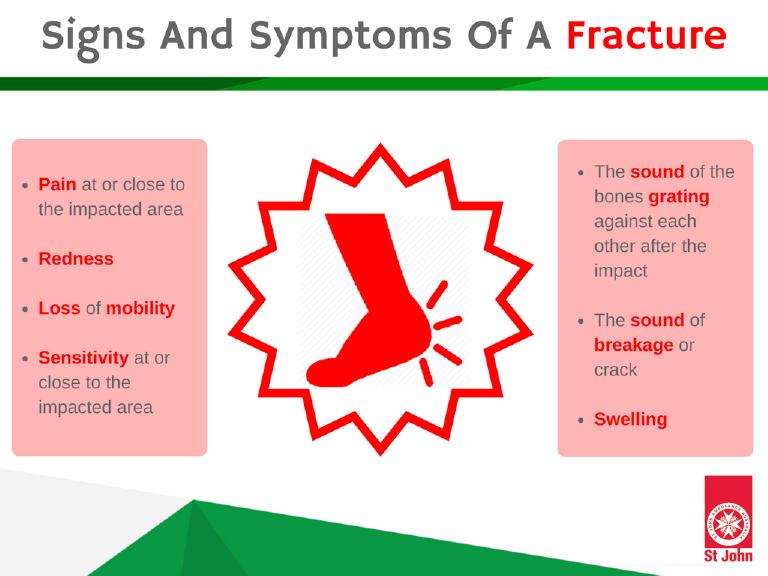
Management Of A Fracture
- Follow DRSABCD
- Ask patient to remain as still as possible
- Control any bleeding, cover any wounds, and check for other fractures
- Immobilise broken bone using a splint
- Check that bandages are not too tight and watch for signs of loss of circulation to the affected limb
- Check for shock and treat if necessary
- Seek medical aid
Splints
Splints are applied to fractures to restrain the casualty from moving the injured body part. Any further movement can cause more damage and increase pain levels. When applying a splint you must:
- Position the splint and body part as close as possible to the limbs natural structure
- Ensure the splint extends beyond the injured area in both directions. This attempts to limit movement of the surrounding joints to prevent further injury
- Use wide bandages above and below the injured area
- Pad the splints to prevent further injury and increase comfort
- Check the casualty’s circulation in both the area of injury and throughout the entire body
Rib Fractures
Rib fractures are often seen in the elderly or sportspeople. Rib fractures in the elderly are generally caused by slips, trips or falls whilst rib fractures in sports can be caused by high impact from teammates, the opposition, sports equipment, trips or falls.
The intensity of the impact generally correlates with the number of ribs fractured. Rib fractures are usually not life-threatening injuries, but if a rib pierces a chest organ the severity intensifies and medical assistance must be called immediately.
Rib fractures are painful and breathing will become difficult for the casualty. If you witness someone endure a high impact to the chest or ribs and they then begin to make a heavy, wheezing sound it is likely they have fractured their ribcage. Advise the casualty to take short breaths as deep or normal breaths will inflict more pain.
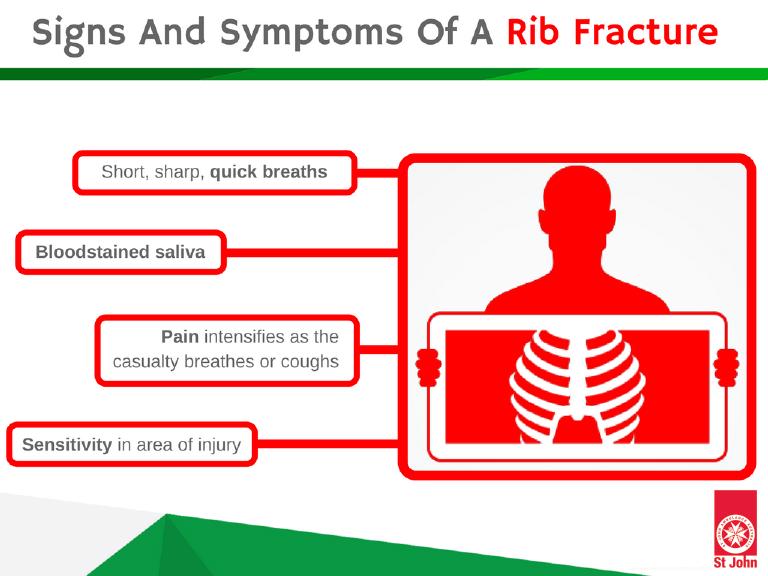
Management Of Fractured Ribs
Conscious casualty
- Follow DRSABCD
- Call Triple Zero (000)
- Help move into a more comfortable position (often half sitting and leaning on the injured side)
- Explain for the casualty to take short breaths
- Gently place ample padding over the injured area, then, secure in place
- Stay with the patient and check regularly
Unconscious casualty
- Follow DRSABCD
- Call Triple Zero (000)
- Lay the casualty down onto their injured side in the recovery position
- Stay with the patient and check regularly
Fractures occur on the football field, tennis court and in all sorts of sporting environments. They also occur in the workplace, in the home, and in a range of public spaces. They can be caused by a trip, slip, fall or direct impact with an object but are generally a result of an unpreventable accident.
No matter what the cause, the sound of a bone cracking or breaking will instil instant dread in anyone. But it’s the pain that follows that sends the alarm that a fracture may have occurred. Fractures are very painful and debilitating injuries. In every instance, it’s important a casualty is provided with the right care to reduce pain, prevent further injury and ensure appropriate injury management is implemented.
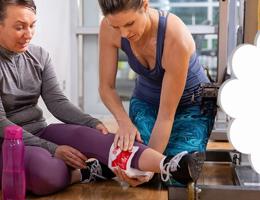
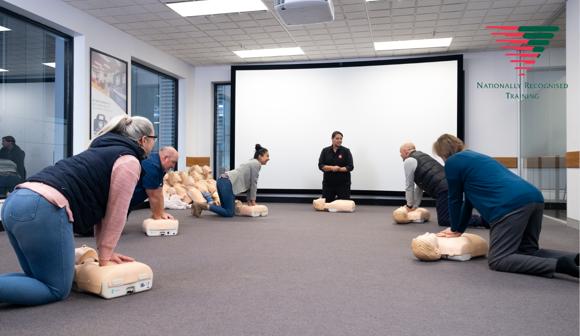
PROVIDE FIRST AID
Learn how to manage a range of common first aid scenarios
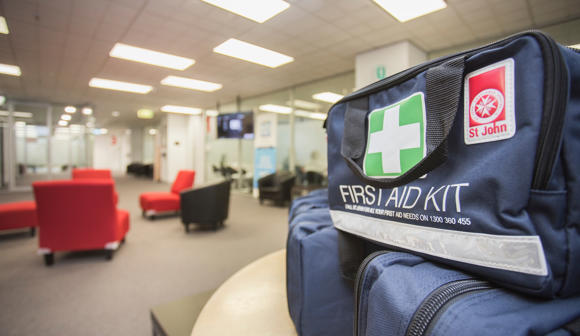
DO YOU HAVE THE RIGHT FIRST AID KIT FOR YOUR HOME, SCHOOL OR WORKPLACE?
St John has a range of First Aid products to suit any situation.
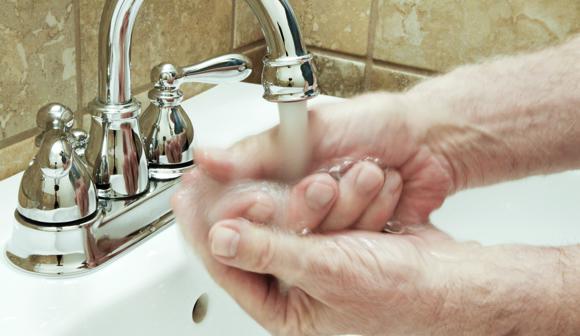
INFECTION CONTROL ELEARNING
Workplace infection control course completed online within 45 minutes.
